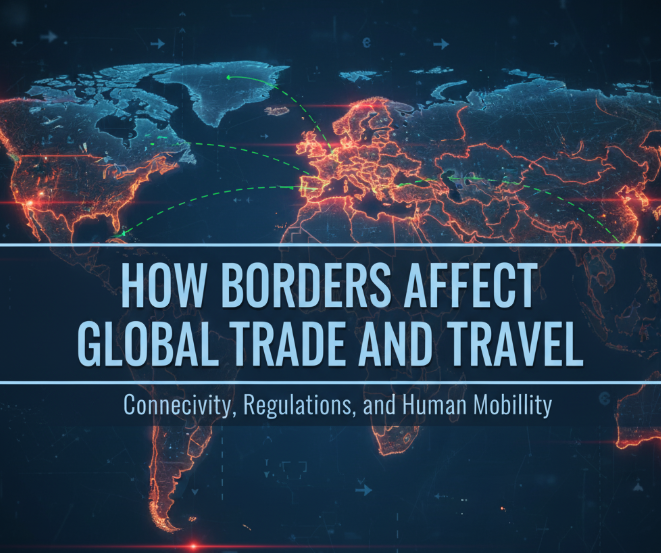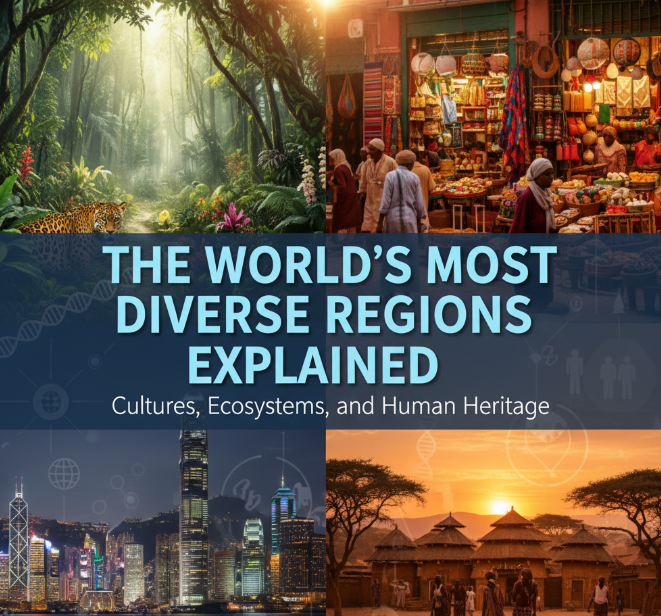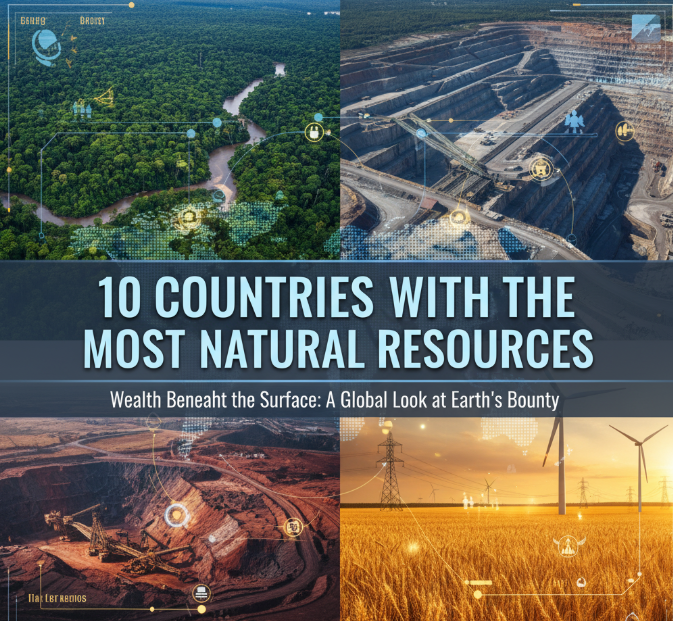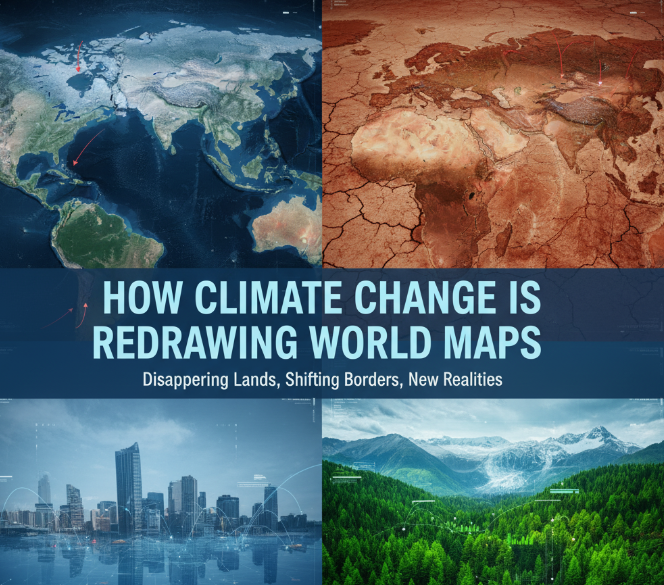There is not a nation on Earth that does not have borders. These hidden lines on a map dictate how we shop, where we may travel and even the prices we pay at stores. But, ever wonder why you pay more to ship a box across an international border than to send it within your own country? Or why you have to get a passport to go some places but not others?
Borders are far more than just lines on a map separating nations. They manage the movement of goods, people and money across the world. Some borders are friendly and open, which makes trade and travel straightforward. Some are strict and restrictive, posing problems for businesses and tourists. In the hyperconnected world we live in today, these lines define our global economy and our daily existence.
This article examines the role of borders in international trade and travel. We’ll examine the actual costs, benefits and challenges that accompany crossing these lines. Whether you’re wondering why your favorite imported snack is so expensive or planning your first international trip, you’ll learn how borders affect nearly every aspect of modern life.
The Reason We Have Borders in the First Place
Nations establish borders for a number of good reasons. The most basic rationale is security. Governments need to have a sense of who crosses their borders and what they are carrying with them. This helps in shielding citizens from illegal practices and threats.
Borders also help keep countries unique. Every country has its own customs, laws and ways of doing things. Borders let the government make rules that fit their people best. One country, for example, could outlaw some product that another country allows freely.
Another is economic control. By regulating what crosses their borders, countries can shield local industry, collect taxes and manage the supply of money. Without borders, there could be no different currencies, tax or trade policies.
The High Price of Cross-Border Traffic in Goods
When something crosses a border, it does not simply magically appear in some other country. There’s an entire system of checks and fees and paperwork. The costs quickly add up, and it impacts the final price consumers pay.
Tariffs and Import Taxes
Tariffs are the taxes that governments levy on imported goods. For example, if a Japanese company were hoping to sell electronics in Brazil, Brazil might impose a 15% tariff on those products. That means that a phone that sells for $500 in Japan could start at $575 in Brazil, before additional expenses.
Nations impose tariffs for various reasons:
- To shelter native industries from foreign competitors
- For government fundraising
- To motivate people to purchase goods that are made in country
- To be used as a weapon against countries with whom they disagree politically
The Paperwork Problem
Shifting goods across an international border involves mountains of paperwork. They have to fill out customs declarations, certificates of origin, shipping manifests and insurance forms. Each form is time-consuming and often involves hiring specialists knowledgeable in international trade laws.
One shipping container could require 30 separate documents to move from one country to another. Screwing up even a single form can hold up shipments for days, if not weeks. This lack of certainty makes international trade more costly and riskier than domestic transactions.
Delays at Border Checkpoints
Trucks filled with goods often sit at the busiest border crossings for hours or days. The US-Mexico border is one of the busiest in the world and commercial vehicles can face wait times longer than 6 hours. All the while, perishable food can go bad and companies risk losing money by paying drivers to wait around.
These delays are the result of customs officers having to physically scrutinize and document shipments, look for contraband, among other tasks. These checks, although essential for security, result in a snarl in the flow of legitimate trade.
Here’s What Changes as You Shift from One Type of Border to the Other
All borders are not created equal. Some make it easy to trade with and travel to and from other countries, while others throw up high hurdles.
Open Borders: The European Union Opens Its Gates, Addresses Mass Migration
The European Union has one of the most open border systems in the world. Customs checks between member countries have largely been abolished. A truck can travel from Spain to Poland without halting at many border checkpoints.
This openness has generated enormous economic benefits. There are the savings on paperwork and delays for companies. Consumers gain access to more products at lower prices. When the job market abroad is better, workers can leave for new jobs.
But open borders also present problems. Nations lose some say over who crosses their borders. They need to line up policies with their neighbors, something that can be hard for countries with conflicting views.
Tight Borders: From North Korea and Beyond
At the other end of the spectrum, some countries have very strict borders. Consider, for instance, North Korea’s tight control over who can enter or leave. Trade is narrowly focused with only a handful of acceptable trading partners and tight travel restrictions.
These rigid borders are economic brakes of enormous weight. Businesses cannot reach foreign markets, or import materials they need. It means citizens miss the chance to work abroad or learn from other cultures. When borders become walls, a whole economy is dragged down with them.
Smart Borders: Using Technology
Many nations are now establishing “smart borders” that use technology to make processing quicker while keeping security strong. These systems use biometric scanners, automatic passport readers and risk-assessment algorithms to find low-risk travelers and consignments.
The US-Canada border has also introduced a number of smart border applications. Trusted traveler programs, like NEXUS, allow preapproved individuals to cross more quickly in designated lanes. Conversely, businesses committed to strong security practices can get their shipments expedited through the trusted trader programs.
How Borders Shape International Tourism
Borders not only affect trade — they have a huge effect on tourism and travel. The rules about crossing borders dictate where people can vacation, how costly trips will be and what kind of experiences they will find when they arrive.
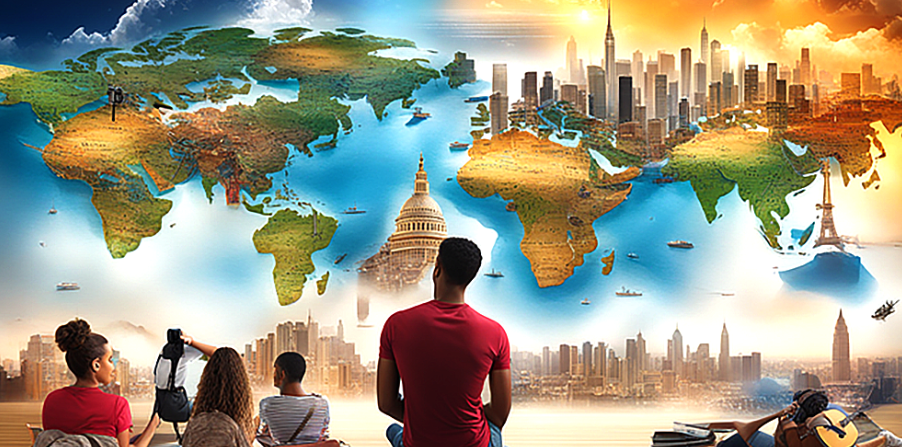
Visa Requirements: The Invisible Barrier
In essence, a visa is when one country gives another an advance thumbs-up that you can visit. Some nations force visitors to apply for their visas weeks or months in advance. Some grant visas on arrival or don’t require them at all.
The worldwide passport ranking depicts the way border policies impact travel. Japan passport holders can visit 194 countries without a pre-approved visa. By comparison, it is easy for Afghans with passports to visit 28 countries. Such discrepancy in travel freedom is a result of geopolitical relations and security risks.
There are costs to getting a visa, and it can take time. American tourist visas are $185 and entail an in-person interview at an embassy. For families in some poor nations, the fee alone might match a month’s wages, putting international travel out of reach.
Border Wait Times for Travelers
Immigration lines are very lengthy in most popular tourist destinations. At the height of travel seasons, tourists could wait 2-3 hours just to get their passport stamped. These delays not only are frustrating, but also dissuade tourism.
Airports in large cities have invested heavily to speed up border crossings. Automated gates scrutinize passport chips and match faces to a photo, reducing processing time from minutes to seconds. However, bottlenecks remain for times when lots of flights show up at once.
How Border Policies Impact Revenue from Tourism
It’s human nature to visit the places that are easy to get into. Thailand relaxed visa restrictions and tourism flourished, leading to more than $60 billion in visitor spending annually. But similarly, strict visa requirements can strangle tourism industries in their cribs.
Countries have gotten creative in solving that problem. Today many countries will allow visa-free entry for short tourist visits but have strict requirements for work or long-term stays. It gets the point across to tourists while still keeping immigration in hand.
The Economic Cost of Border Friction
Border friction includes all the costs and delays at the border. Little frictions can have big effects in the global economy.
Supply Chain Complications
Nowadays, products are seldom made in just one country. A cellphone can contain parts from 20 countries. Every time components cross a border, costs grow and delays may loom.
When companies are designing supply chains, they seek to minimize border crossings, but they can’t always. Some unusual substances may be found only in certain countries. Specialized skills may be found only in certain regions. Border frictions force companies to choose between efficiency and where they happen to be in relation to the map.
Price Differences Between Countries
The problems of the border costs generate price differences for the same item in two countries. An iPhone that retails for $999 in the United States might sell for closer to $1,200 in Brazil once import taxes, shipping costs and dealer markups are all included.
These price discrepancies present the already lucrative arbitrage opportunities — purchasing goods in low-cost countries and reselling them in high-cost ones. Small quantity for personal use is legal but arbitrage in large scale is against policy of many companies and can bring warranty troubles.
Impact on Small Businesses
Big companies have international trade compliance departments. Small firms typically don’t have these resources at their disposal, which puts them at a disadvantage in the global market.
A small clothing boutique in Vietnam may produce great products, but they too often can’t export them because of complex customs procedures. Yet, at the same time big fashion houses can safely navigate these borders due to their legal departments and relationships with customs.
Trade Accords: Making Borders Vanish — But Not Literally
Nations occasionally erect trade agreements that lower border friction. These agreements don’t have an immediate physical impact on borders, but they do make crossing them easier for trade.
Free Trade Agreements
Free Trade Agreements (FTAs) eliminate or lower the tariffs between the signatories. NAFTA, linking the US, Canada and Mexico, eliminated most tariffs and established the world’s largest free trade area.
The virtues of FTAs are many. Trade between countries in NAFTA tripled over the 20 years after the deal went into force. It afforded consumers cheap goods, and businesses new markets for their wares.
However, FTAs also have critics. Some workers already lose jobs when companies transfer production to countries with cheaper labor. Local industries may find it difficult to compete with imported industrial goods. These are real costs visited on the lives of actual people, hence trade agreements’ political controversiality.
Customs Unions
Customs unions are more than just free trade agreements. Not only do these member nations eliminate their own tariffs, they also create a common external tariff. The European Union is a customs union that treats the goods that come into it from outside as if they were coming into one large country.
This system simplifies trade administration. Businesses need to clear customs only once, then they can distribute products freely throughout the union. The trade-off is that nations lose some freedom in conducting their own trade policies.
Regional Integration Success Stories
ASEAN (Association of Southeast Asian Nations) members have been slowly easing travel restrictions between their nations. This intra-regional cooperation has contributed to Southeast Asia becoming a manufacturing hub.
Companies now think of the whole of ASEAN as a single market, setting up plants in each country depending on their individual strengths. Thailand may be the source for automotive parts, Vietnam for textiles and Singapore offers financial services. It has contributed to raising living standards across the region.
How Technology is Transforming How Borders are Managed
Advanced technology is changing the way borders are managed, making crossings both faster and more secure.
Digital Customs Declarations
Paper customs forms are gone in many countries and electronic filings are the norm. Companies provide shipping information before goods leave the origin country. Customs officers pre-screen data and highlight any suspicious shipments that might require a physical inspection.
This pre-clearance expedites physical border crossings significantly. Authorized shipments pass through checkpoints rapidly as officers concentrate on higher-risk cargo. The system benefits everyone but the smugglers.
Biometric Border Controls
Facial recognition technology and fingerprint scans are increasingly part of the welcome package at international airports. These systems would instantly match traveler to document and also identify passport fraud or identity theft.
Biometric systems have already been rolled out in Dubai Airport halls. Travelers briskly stroll through a tunnel that scans their faces and irises without breaking stride. The whole procedure lasts about 15 seconds, as opposed to several minutes handled in traditional passport checks.
Blockchain for Trade Documentation
Trade documents are expected to be revolutionized by blockchain technology. The system generates digital, unalterable records immediately available to all parties. Gone were the days of misplaced paperwork and complaints about document authenticity.
A crop of test blockchain systems are in use by ports and shipping firms. Preliminary findings indicate major time and money savings. As the technology matures, it could do away with much of the paper hassle required for international trade.
Environmental Costs of Border Inefficiency
Border costs and trade impediments have surprising environmental effects that are rarely acknowledged.
Idling Trucks and Pollution
Engines run so cargo can be refrigerated, but also so drivers have air conditioning. All that idling wastes fuel and spews pollution into the air.
More than 5 million trucks cross annually over the US-Mexico border. Assuming two hours of idling per truck on average, that’s 10 million hours of emissions for no good reason. Efficiency at the border would provide an instant environmental gain.
The Carbon Impact of Tariffs
When tariffs make direct trade costly, companies sometimes route goods through an intermediary country to minimize fees. This practice is known as transshipment and it needlessly lengthens shipping lanes.
For example, garments manufactured in Cambodia could be sent to Dubai for re-labeling before moving on to Europe to benefit from lower tariffs. The extra miles these products travel add to the carbon footprint of all the products.
The Human Side of Borders
And beneath all the numbers and economic theory, borders have an impact on real people in meaningful ways.
Separated Families
Families can be separated for years under strict border policies. A parent who works in a foreign country may not be able to travel home to see children if visa policies are too strict. The emotional toll of these separations is incalculable but very real.
Some of the borders cut through towns, slicing villages in two. Families on one side may be unable to see relatives 100 meters away on the other. These are the divisions that statistics do not capture but that produce difficulties every day.
Brain Drain and Opportunity
Open borders free talented individuals to move where their talents are most valued. A brilliant Indian engineer could conceivably earn far more working in Silicon Valley than back home. This is a win-win situation for the individual and the host country.
But source countries lose the talent they groomed and schooled. This “brain drain” can stifle progress in poorer countries. Some countries attempt to prevent this shift by all but prohibiting educated citizens from leaving, a strategy that can easily backfire.
Refugee Crises
In times of war or disaster, people leave their countries in search of safety. The way borders work during these crises dictates whether people fleeing find safety or greater peril.
The Syrian refugee crisis pushed European border policies to the brink. Some countries threw open the doors to millions of refugees, others built fences. These varied reactions mirrored values, capability and political concerns.
For more information on global migration patterns and border policies, visit the International Organization for Migration.
What’s Next: Where Are Borders Going?
No one knows what the future holds for borders, but a few trends are beginning to form.
Increasing Economic Integration
Political tensions notwithstanding, economic integration is growing stronger. Supply chains are growing increasingly long and international. Borders scarcely impinge on digital services at all.
This economic reality drives countries toward cooperation. Political rivals also are trading partners, even if they don’t like the other’s politics because both benefit.
Security Concerns vs. Openness
Terrorist attacks and security concerns have caused many countries to be more wary of open borders. Finding that balance between the need for security and economic values is still a work in progress.
New technologies could help untangle this tension. If they can spot threats fast and precisely, countries may feel confident about keeping things open for those legitimately traveling or trading.
Climate Change and Migration
Rising seas and increasingly extreme weather will drive millions of people to move in the coming decades. How borders manage climate migration will set the template for geopolitics in the 21st century.
Some experts forecast “climate walls” as wealthy nations seek to restrict immigration from impacted regions. Others wish for collaborative international responses which, responsibly and humanely, tackle the causes of migration.
Table: Comparing Border Policies Around the World
| Region/Agreement | Border Openness | Visa Requirements | Trade Barriers | Average Customs Clearance Time |
|---|---|---|---|---|
| European Union | Very High | None for members | Very Low | 1-2 hours |
| ASEAN | Moderate-High | Varies depending on country of origin/receiving port | Low-Moderate | 3-6 hours |
| North America (USMCA) | Moderate | Required outside citizenry | Low | 2-4 hours |
| Africa (AfCFTA) | Low-Moderate | Varies drastically across nations | Moderate-High | 6-24 hours |
| South Asia | Low | Restrictive | High | 24-72 hours |
| Isolated States (e.g., North Korea) | Very Low | Highly restrictive | Very High | Days to weeks |
What This Means for You
And you may well be asking yourself why border policies should matter to your life. Here’s how they affect you:
When you purchase goods online, border policies dictate what’s available and how much it costs. That video game console or article of clothing could be so pricey, at least in part, because of import tariffs and customs fees.
If you fantasize about seeing the world, border policies determine where you can travel without jumping a visa hurdle or three. They determine how long you sit at airports and shape your trip’s cost.
In your life and career to come, you live in a border-based global economy and job market. They dictate whether companies can make products at home or must look abroad. They have an impact on which jobs are available and where.

Making Borders Work Better
Improving border systems benefits everyone. So far, these are some of the promising approaches:
Risk-based screening prioritizes resources on what is actually a threat, instead of equally inspecting everything. This allows for the expedited processing of known travelers and low-risk cargo while protecting security.
Harmonization of rules between countries, by contrast, limits confusion and the costs of compliance. When countries implement and adopt development-compatible systems, trade is easier for everyone.
Invest in infrastructure at border crossings so there are no bottlenecks. Modern infrastructure with sufficient staffing can move more people and goods, faster.
Regional cooperation enables neighboring countries to address common problems together. There is less friction in joint border management facilities and coordinated policies.
Frequently Asked Questions
Q: Why do some countries have such strict border policies?
There are so many reasons for countries to keep their borders tight and strict like security, local jobs and industries preservation, managing immigration and tackling illegal activities. Political considerations and historic tensions with neighboring countries also shape how strict borders are.
Q: In what ways do trade agreements minimize border friction?
Trade pacts help limit border friction by eliminating or reducing tariffs, standardizing paperwork requirements, creating fast tracks for vetted traders and setting up a process to resolve disputes. These measures make it faster and cheaper for firms to cross borders.
Q: Can I avoid paying import duties for things I bring over the border?
Most countries permit travelers to bring in a value of goods duty-free, usually ranging from $200 to $800 depending on the country. Goods valued above this are subject to duties and taxes. Personal effects you are bringing back home generally do not count toward this limit.
Q: Why is international shipping so much more expensive than domestic shipping?
Due to customs clearance costs, international transit fees, documentation and insurance, as well as possible duties and taxes. Packages also tend to go further and change hands multiple times.
Q: What’s the normal shipping time for goods to pass through customs?
Clearance time on customs can vary greatly on the country, type of goods and whether they pull the package for inspection. These fast customs systems will get your express shipments cleared within hours however for regular ones you should expect 1-5 days. More complex cases or investigations may take weeks.
Q: Will the borders of the future be more open or more closed?
This is certainly not clear and probably varies with the region. Economic pressures make openness more beneficial for trade, and security concerns and political nationalism push toward closure. Technology, some experts hope, may enable borders to be both more secure and more porous.
Q: What role do borders play in online shopping?
Borders have a potentially broad reach when it comes to online shopping, too: They restrict where websites will ship to your country, impose customs duties and taxes on purchases and prolong delivery times — part of the reason you might want to order that candle now!—and can even keep certain products from being sold across borders at all due to regulatory limitations or company licensing agreements.
Q: What is the difference between a passport and visa?
Your passport is your identity and citizenship proving document in your home country. A visa is the permission of another country for you to enter their territory. You can’t travel to most foreign countries without both – you need the passport to leave home and return, and your destination typically requires the visa.
Wrapping Up
Borders have myriad ways they can and do bend the world around us. They decide what goods we can buy, where we can travel and how the global economy works. If people didn’t grasp anything about how borders work, we wouldn’t be able to make sense of international news, trade wars or economic trends.
To the extent that borders are to keep out threats, we will probably have to be abreast of future mutations in how these borders operate. Technology offers the promise of faster and more secure crossings. Economic integration goes on while political opposition is reinforced. Border systems will be stressed as climate change and global challenges manifest in them new.
Borders don’t become either more open or more closed by themselves; societies make choices. The tradeoff between security, economic stability and human freedom is a wrinkle that won’t ever get ironed out. What’s decided today about border policing will set the horizon of possibility for decades.
In the meantime, borders still rank among the most formidable barriers affecting international trade and travel. They influence the prices in stores, wait times at airports and opportunities open to billions of people around the world. The more we understand how borders work, the better able we will be to manage our ever-more-borderless world and engage with conversations about what borders should look like going forward.

